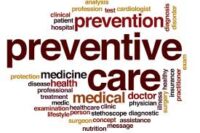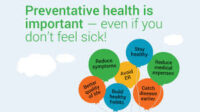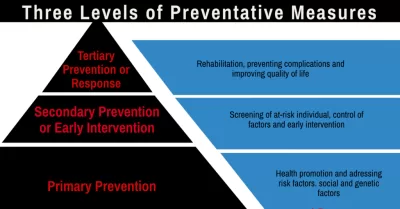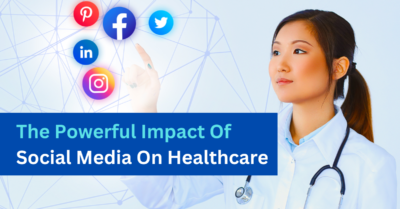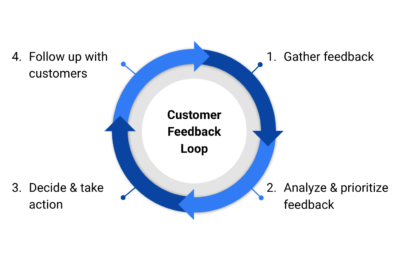Promoting preventative healthcare is an essential part of maintaining good health. By taking steps to prevent illnesses and diseases, you can avoid the need for costly medical treatments down the road. Preventative healthcare includes regular check-ups, screenings, and lifestyle changes that can help you stay healthy and avoid serious health problems.
Regular check-ups are an important part of preventative healthcare. During these visits, your healthcare provider can check for signs of illness or disease, and recommend screenings or other preventative measures. Depending on your age, gender, and medical history, your provider may recommend regular screenings for conditions such as cancer, high blood pressure, and diabetes.
In addition to regular check-ups, lifestyle changes can also help promote preventative healthcare. Eating a healthy diet, getting regular exercise, and avoiding smoking and excessive alcohol consumption can all help reduce the risk of developing chronic health conditions. By taking steps to promote preventative healthcare, you can help ensure that you stay healthy and avoid serious health problems down the road.
Understanding Preventative Healthcare
Preventative healthcare is an approach to healthcare that focuses on preventing the onset of diseases or illnesses rather than treating them after they have developed. Preventative healthcare aims to keep you healthy and reduce the risk of developing serious health problems. In this section, we will discuss the benefits of preventative measures and the different types of preventative care.
Benefits of Preventative Measures
Preventative healthcare has numerous benefits. It can help you avoid serious health problems, such as heart disease, diabetes, and cancer. By detecting health problems early, you can receive prompt treatment, which can improve your chances of recovery. Preventative measures can also help you maintain a healthy weight, reduce stress, and improve your overall quality of life.
Types of Preventative Care
There are three types of preventative care: primary, secondary, and tertiary.
Primary prevention aims to prevent the onset of a disease or illness before it occurs. This includes measures such as vaccinations, healthy lifestyle choices, and regular health screenings. Secondary prevention involves detecting and treating health problems early, before they become serious. This includes measures such as cancer screenings, blood pressure checks, and cholesterol tests. Tertiary prevention aims to manage and treat an existing health problem to prevent complications. This includes measures such as physical therapy, medication management, and rehabilitation.
Preventative healthcare is an important aspect of maintaining your overall health and well-being. By taking proactive steps to prevent the onset of diseases and illnesses, you can reduce your risk of developing serious health problems and improve your quality of life.
The Role of Digital Marketing
Digital marketing has become an essential tool for promoting preventative healthcare. With the increasing use of technology in people’s daily lives, it is an effective way to reach out to a wider audience and promote healthy behaviors. In this section, we will discuss the importance of digital marketing in promoting preventative healthcare and the strategies that can be used to reach out to your target audience.
Digital Marketing Strategies
There are various digital marketing strategies that can be employed to promote preventative healthcare. Some of the most effective strategies include:
- Social Media Marketing: Social media platforms like Facebook, Twitter, and Instagram are great tools for promoting preventative healthcare. You can create engaging content that promotes healthy behaviors and share it with your followers. You can also use social media to run targeted ads that reach your target audience.
- Email Marketing: Email marketing is a cost-effective way to reach out to your audience and promote healthy behaviors. You can create engaging newsletters that provide valuable information about healthy living and send them to your subscribers.
- Content Marketing: Content marketing involves creating valuable content that promotes healthy behaviors. You can create blog posts, videos, and infographics that provide useful information about healthy living and share them on your website and social media platforms.
Target Audience Analysis
To create effective digital marketing campaigns, it’s important to understand your target audience. You need to know their demographics, interests, and behaviors to create content that resonates with them. Here are some tips for analyzing your target audience:
- Demographics: Start by analyzing the demographics of your target audience, including age, gender, income, education, and location. This information will help you create content tailored to their needs.
- Interests: Find out what your target audience is interested in, including their hobbies, favorite TV shows, and music preferences. This information will help you create content that is engaging and relevant to them.
- Behaviors: Analyze the behaviors of your target audience. This includes their online behavior, such as the websites they visit, the social media platforms they use, and the content they engage with. This information will help you create targeted ads that reach out to your audience.
Content Creation and Management
Creating and managing content is an essential part of promoting preventative healthcare. Educational content is a great way to inform and educate your audience about the importance of preventive care. This can include articles, blog posts, videos, infographics, and other types of content that provide valuable information about preventive health measures.
Educational Content
When creating educational content, it is important to consider your target audience. Different age groups, genders, and ethnicities may have different healthcare needs and concerns. Therefore, you should tailor your content to address these specific needs and concerns.
In addition, your content should be easy to understand and free of medical jargon. Use clear and concise language to explain preventive health measures in a way that is easy for your audience to understand.
Engaging Visuals and Interactivity
Engaging visuals and interactivity can also be effective in promoting preventive healthcare. Visuals such as infographics, charts, and diagrams can help simplify complex information and make it easier for your audience to understand.
Interactive content such as quizzes, surveys, and games can also help to engage your audience and make learning about preventive healthcare more fun and interactive.
When creating visuals and interactive content, it is important to keep them visually appealing and easy to use. Use bold colors, clear fonts, and intuitive navigation to create a visually appealing and user-friendly experience for your audience.
Social Media Influence
Social media has become an influential tool in promoting preventative healthcare. With the rise of social media, healthcare providers can leverage social networks to reach out to a broader audience and promote healthy lifestyles. Here are two ways you can use social media to promote preventative healthcare:
Leveraging Social Networks
Social media platforms provide an excellent opportunity to reach a wider audience and promote healthy living. You can create social media profiles for your healthcare organization and share health tips, news, and other relevant information with your followers. By regularly posting informative content, you can establish yourself as an authority in your field and build a community of individuals interested in preventative healthcare.
You can also use social media to encourage engagement and interaction with your followers. For example, you can ask your followers to share their success stories or tips for staying healthy. You can also host live Q&A sessions or webinars to answer questions and provide valuable information.
Influencer Partnerships
Partnering with social media influencers can also be an effective way to promote preventative healthcare. Influencers have a large following and can help spread your message to a wider audience. You can collaborate with influencers to create content promoting healthy living or showcase your healthcare services.
When partnering with influencers, it’s important to choose individuals whose values align with your healthcare organization. You should also ensure that the content they create is accurate and informative. By partnering with the right influencers, you can reach a broader audience and effectively promote preventative healthcare.
Search Engine Optimization
To promote preventative healthcare, it is important to utilize search engine optimization (SEO) techniques to ensure that your website ranks high in search engine results. There are two major aspects of SEO: keyword research and on-page optimization.
Keyword Research
Keyword research is the process of finding the most relevant and popular keywords related to your healthcare services. You can use various tools like Google Keyword Planner, SEMrush, and Ahrefs to find the most relevant keywords for your website.
Once you have identified the most relevant keywords, you can use them in your website’s content, meta tags, and URLs. However, it is important to avoid keyword stuffing, which means using too many keywords in your content. This can lead to penalties from search engines and negatively impact your website’s ranking.
On-Page SEO Techniques
On-page SEO techniques involve optimizing your website’s content and structure to make it more search engine-friendly. Some of the key on-page SEO techniques include:
- Title tags and meta descriptions: These are the most important on-page elements for SEO. Your title tags and meta descriptions should include your target keywords and accurately describe the content of your page.
- Header tags: Header tags (H1, H2, H3, etc.) help to structure your content and make it more readable. Use header tags to highlight the most important sections of your content.
- Internal linking: Internal linking helps to connect your pages and distribute link equity throughout your website. Use internal links to guide users to related content on your website.
- Image optimization: Images should be optimized for search engines by including alt tags and descriptive file names. This helps search engines to understand the content of your images.
Overall, SEO is integral to digital marketing for promoting preventative healthcare. By conducting thorough keyword research and implementing on-page SEO techniques, you can ensure that your website ranks high in search engine results and attracts more potential patients to your healthcare services.
Email Marketing Campaigns
Email marketing is a powerful tool to promote preventative healthcare. With a well-planned email marketing campaign, you can reach out to your patients, educate them about the importance of preventative healthcare, and encourage them to take action.
Newsletter Strategies
Newsletters are a great way to keep your patients informed about the latest news and developments in the healthcare industry. You can share information about new treatments, medical breakthroughs, and healthy lifestyle tips in newsletters.
To make your newsletters more effective, consider the following strategies:
- Keep your newsletters short and to the point. Focus on one or two topics per newsletter.
- Use eye-catching graphics and images to make your newsletters more visually appealing.
- Include a call-to-action in each newsletter, such as a link to book an appointment or schedule a check-up.
Personalization and Segmentation
Personalization and segmentation are key to the success of your email marketing campaigns. By segmenting your email list and personalizing your emails, you can increase engagement and improve your conversion rates.
To personalize your emails, consider the following strategies:
- Address your patients by name in your emails.
- Use dynamic content to tailor your emails to the interests and needs of your patients.
- Send targeted emails based on your patients’ demographics, interests, and health concerns.
By using these strategies, you can create effective email marketing campaigns that promote preventative healthcare and encourage your patients to take an active role in their health.
Analyzing and Adapting Strategies
When promoting preventative healthcare, it is important to analyze and adapt your strategies to ensure their effectiveness. Two key techniques for doing this are data-driven decision-making and A/B testing with feedback loops.
Data-Driven Decision Making
Data-driven decision-making involves using data to inform your decisions. This can include data on your target audience, their behaviors, and their preferences. By analyzing this data, you can gain insights into what is working and what is not and adjust your strategies accordingly.
One way to collect data is through digital marketing. Tools like Google Analytics can track website traffic, social media engagement, and other metrics. This can help you understand which channels are most effective for reaching your target audience and which messages resonate with them.
A/B Testing and Feedback Loops
A/B testing involves testing two different strategy versions to see which one performs better. For example, you could test two different email subject lines or two different landing pages. You can determine which version is more effective by analysing the results and adjusting accordingly.
Feedback loops involve collecting feedback from your target audience and using it to improve your strategies. This can include feedback on your website, social media pages, or other channels. By listening to your audience and making changes based on their feedback, you can improve the effectiveness of your strategies.
Legal and Ethical Considerations
When promoting preventative healthcare, it is essential to consider the legal and ethical implications of your actions. Failure to comply with regulations and protect patient privacy can result in legal and moral consequences that can harm your reputation and your ability to help others. In this section, we will discuss some of the critical legal and ethical considerations you should consider when promoting preventative healthcare.
Compliance with Regulations
Compliance with regulations is one of the most important legal considerations when promoting preventative healthcare. There are a number of regulations that govern the way healthcare providers and organizations can promote preventative healthcare, including the Health Insurance Portability and Accountability Act (HIPAA) and the Affordable Care Act (ACA).
HIPAA is a federal law that protects the privacy and security of patient health information. When promoting preventative healthcare, you must comply with HIPAA regulations and protect patient privacy. This means that you must obtain patient consent before sharing their health information and take steps to secure their information to prevent unauthorized access.
The ACA also has regulations related to preventative healthcare. For example, the ACA requires insurance companies to cover certain preventative services, such as annual wellness visits and cancer screenings without cost sharing. When promoting preventative healthcare, you should be familiar with these regulations and ensure you comply with them.
Privacy and Data Protection
In addition to compliance with regulations, you must also consider privacy and data protection when promoting preventative healthcare. This includes protecting patient health information and ensuring that data is secure and protected from unauthorized access.
To protect patient privacy, you should ensure that you collect only the information necessary for your program and obtain patient consent before collecting any information. You should also take steps to secure patient information, such as using encryption and limiting access to authorized personnel.
Data protection is also important when promoting preventative healthcare. This includes ensuring that data is accurate and up-to-date and stored securely to prevent unauthorized access. You should also have a plan for responding to data breaches and other security incidents.
In conclusion, we’ve seen the huge impact digital marketing can have on promoting preventative healthcare, such as leveraging social networks and partnering with influencers to reach a wider audience and encourage healthy living and email marketing.

